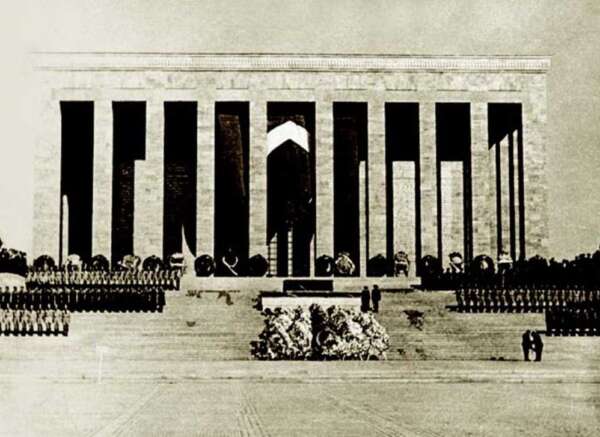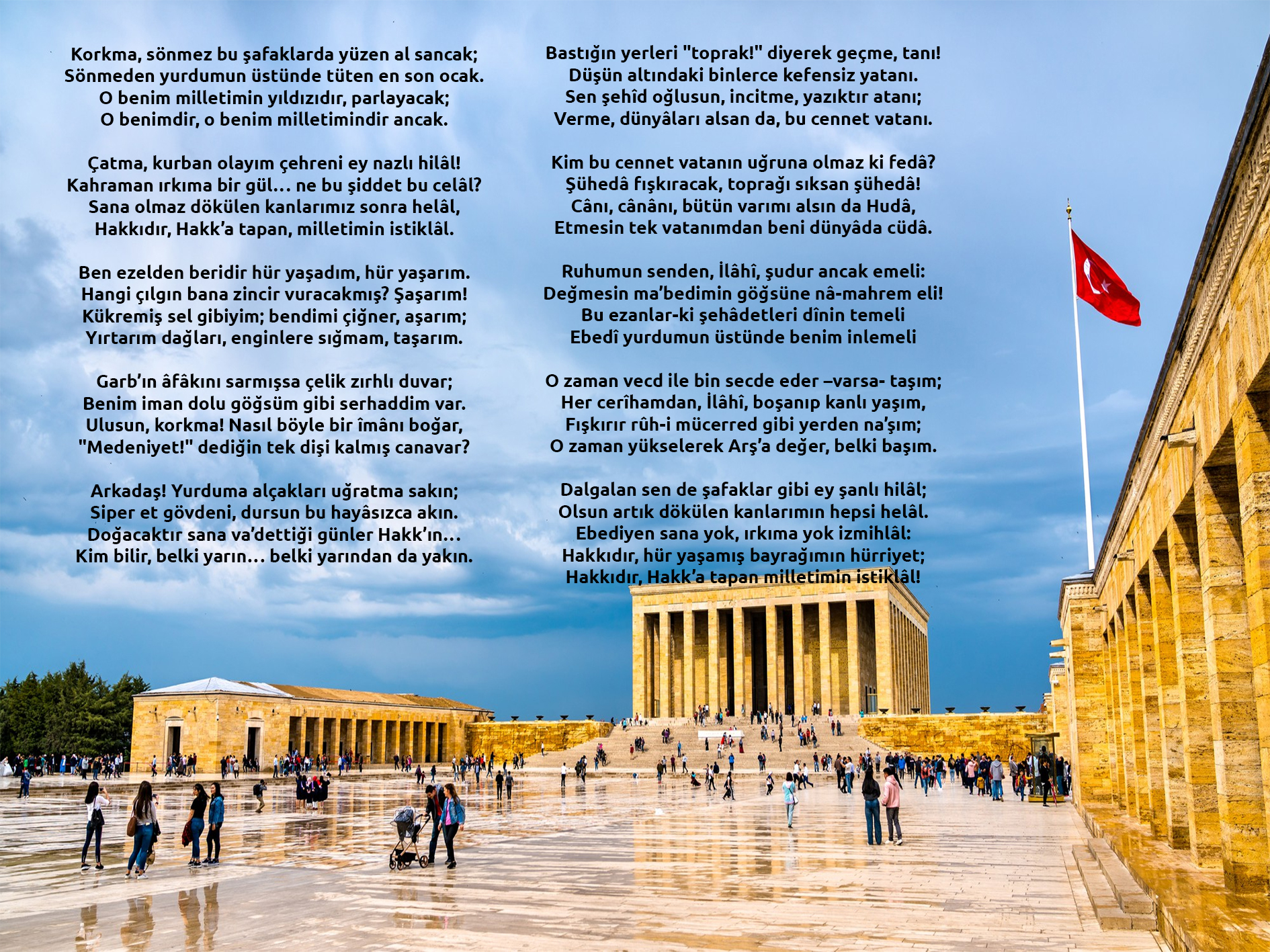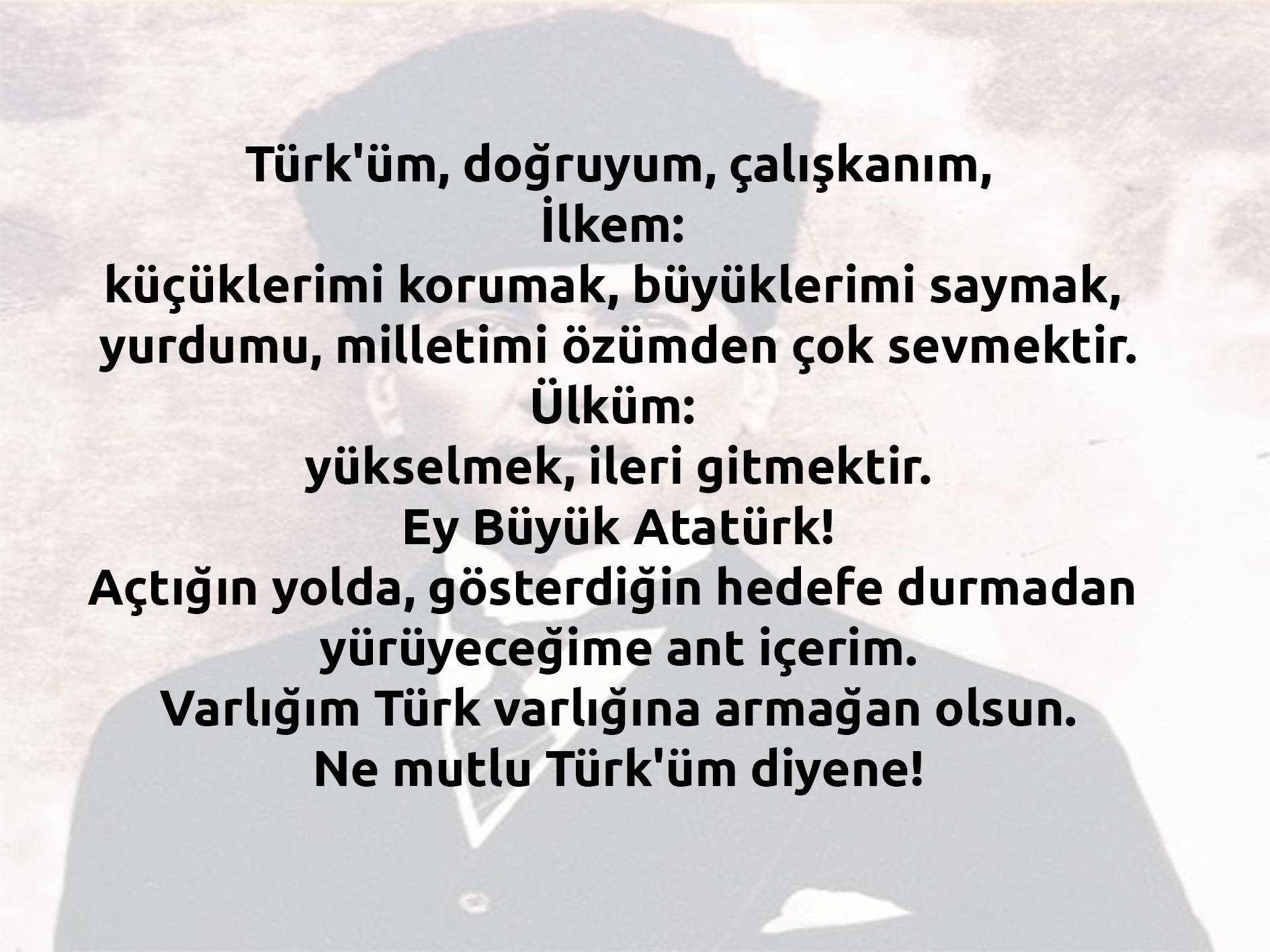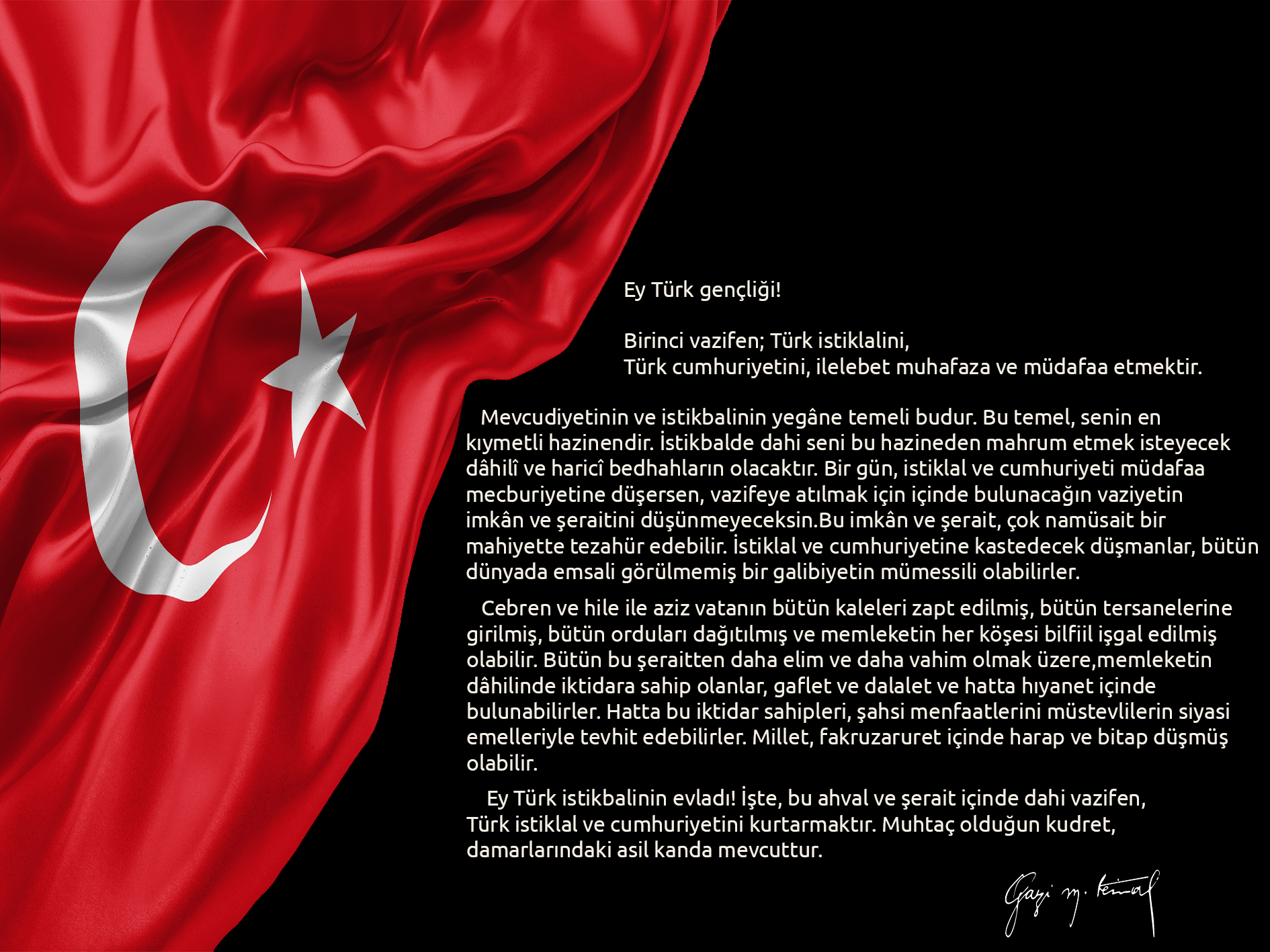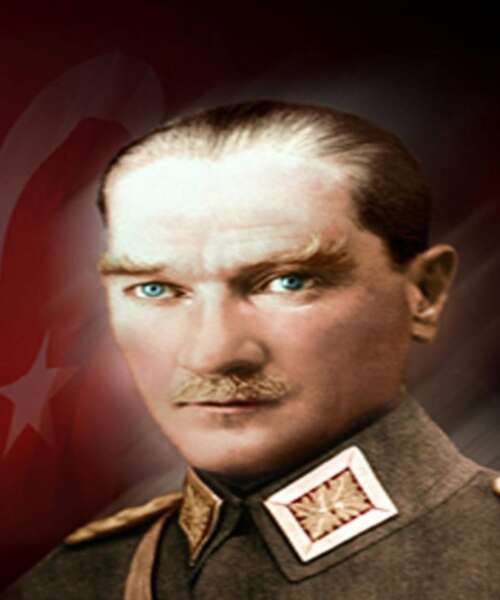
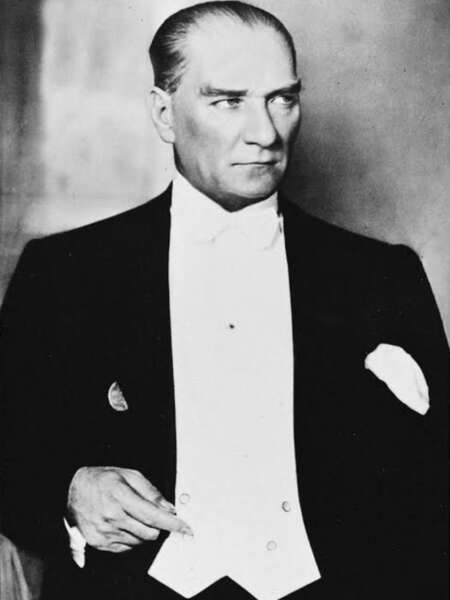

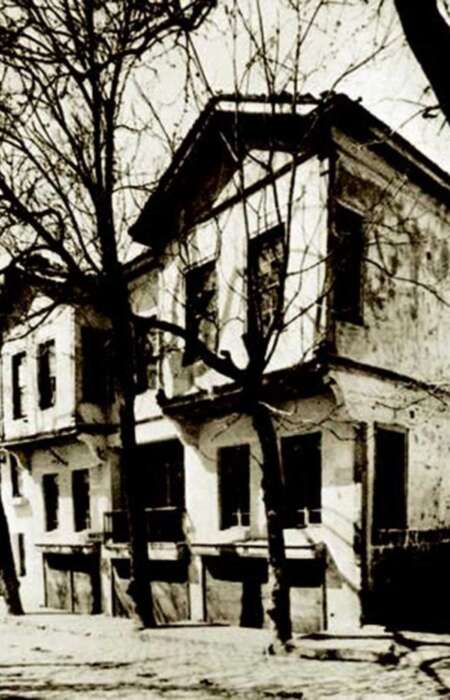
His father was Ali Rıza Efendi and his mother was Zübeyde Hanım. His paternal grandfather, Hafız Ahmet Efendi, was a Kocacık yörük, who settled in Macedonia from Konya and Aydın in the 14th-15th centuries. His mother, Zübeyde Hanım was the daughter of an old Turkish family who settled in the town of Langaza near Thessaloniki. Ali Rıza Effendi married Zübeyde Hanım in 1871. Four of Atatürk’s five siblings died at an early age; only Makbule (Atadan) Hanım lived until 1956.
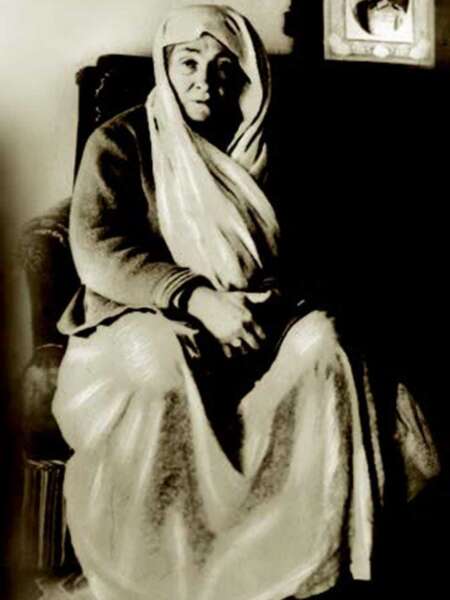
When young Mustafa reached the age of education, he started his primary education at Hafız Mehmet Efendi’s neighborhood school upon his mother’s request. After a short time, at his father’s request he transferred to Şemsi Efendi School that provided a modern education compared to the conditions of the period. His father died during this time. After staying with his uncle in Rapla Farm for a while, he returned to Thessaloniki and finished his primary education. He enrolled in the Selanik Mülkiye Rüştiyya, and shortly later, in 1893, he entered the Selanik Military Rüştiyya. Here he took the name “Kemal” from his favorite mathematics teacher, Captain Mustafa Efendi. Thus, his name became “Mustafa Kemal”. After graduating from Selanik Military Rüştiyya, he entered Monastir Military High School (Manastır Askeri İdadisi) in 1896. His interest in literature laid the foundation for his future mastery of oratory and written expression. His history teacher at the Monastir Military High School, Senior Captain Mehmet Tevfik Bey, was the main factor in Mustafa Kemal’s interest in history, especially Turkish history. After having attended the Monastir Military High School between 1896 and 1899, he enrolled in the infantry class of the Military Academy in Istanbul. During his studies at this school, he secretly published a hand-printed newspaper with his friends to spread the ideas of freedom. In 1902, he graduated from the Military Academy with the rank of lieutenant and entered the War Academy.
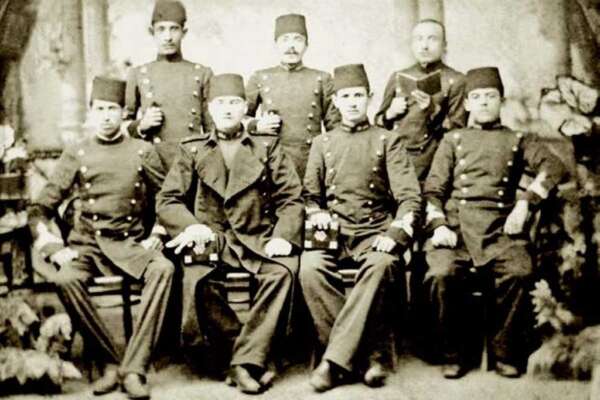
In 1903, he advanced to second class and was promoted to first lieutenant. On January 11, 1905, he graduated from the War Academy with the rank of captain.
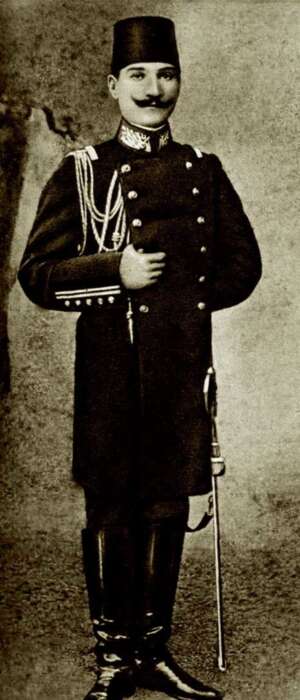
Mustafa Kemal was recognized as an enlightened and forward-thinking officer who was deeply interested in the problems of the country and the nation during his studies at the War Academy. Consequently, following his graduation from the War Academy, he was detained for a short time for his anti-government ideas. In 1905, he was assigned to the 5th Army in Damascus. In the same year, together with some of his friends, he secretly founded Vatan ve Hürriyet Cemiyeti (Motherland and Liberty Society). This society opened branches in Beirut, Jaffa, and Jerusalem.
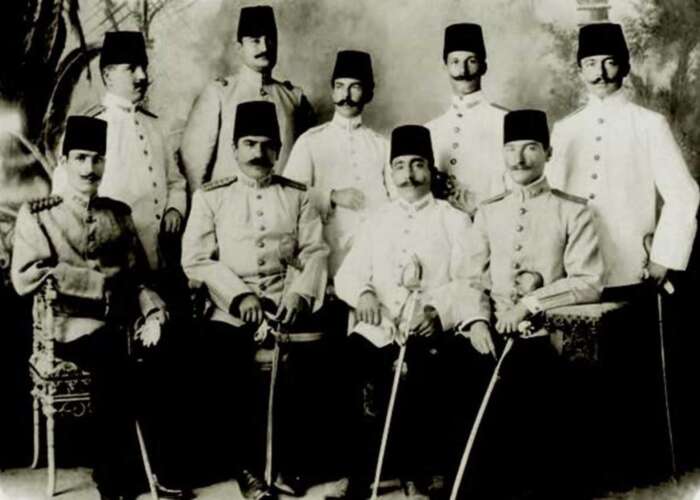
In 1906, he secretly returned to Thessaloniki to open a branch of the society there. The branch in Thessaloniki joined Osmanlı Hürriyet Cemiyeti (Ottoman Liberty Society) in the same year. This society, which was operating secretly in Thessaloniki, merged with Osmanlı Ittihat ve Terakki Cemiyeti (Ottoman Committee of Union and Progress) in 1907. Mustafa Kemal was promoted to the rank of Senior Captain in 1907.
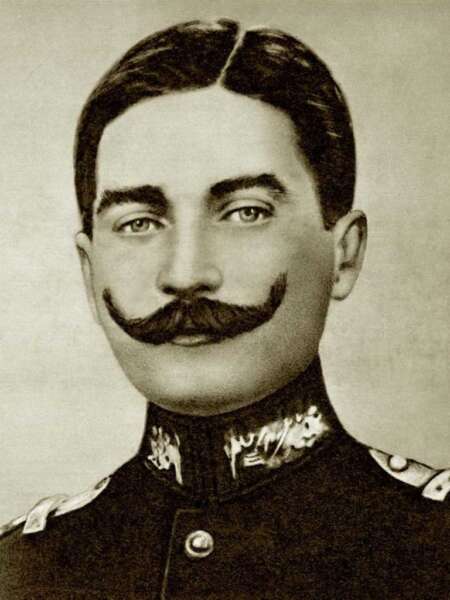
He was then assigned to the headquarters of the 3rd Army in Bitola (Monastir). He started to work in the staff branch of the headquarter in Thessaloniki. In addition to his duties in Thessaloniki, he was assigned as the Eastern Railway Inspector between Skopje and Thessaloniki. He was sent to Tripolitania by the Central Committee of Ittihat ve Terakki Cemiyeti to prevent backlash following the declaration of the Constitutional Monarchy (Meşrutiyet). After resolving the unrest there, and ensuring the establishment of state authority, he returned to Thessaloniki in January 1909.
He was appointed as the Chief of Staff of the 3rd Army Thessaloniki 2nd Redif Division. On April 15-16, 1909, in the wake of the rebellion that went down in history as 31 March Incident, he moved from Thessaloniki to Istanbul as the chief of staff of the Action Army under Hüseyin Hüsnü Pasha’s command.
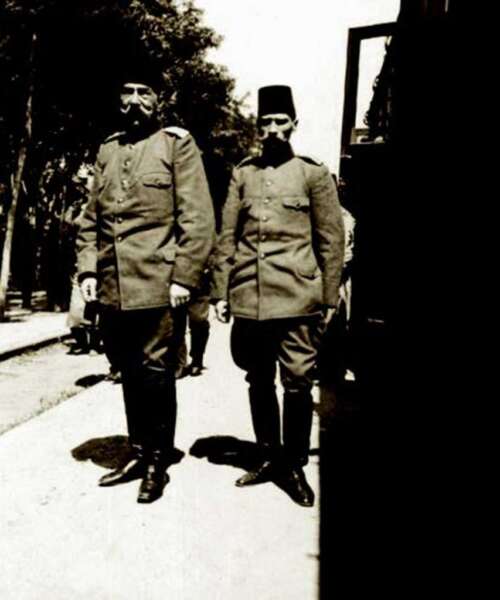
Mustafa Kemal personally penned the first declaration issued by the Action Army to the people of Istanbul. In 1909, he attended the second grand congress of Ittihat ve Terakki Cemiyeti in Thessaloniki as the delegate from Tripolitania. During this congress, he advocated the army’s withdrawal from politics, expansion of the organization of the committee among the people, and its transformation into a political party rooted in the nation. He distanced himself from the committee; because the leader did not share his views; and devoted himself to his military duty. Mustafa Kemal was re-appointed to the headquarters of the 3rd Army from the Chief of Staff of the 2nd Redif Division. In May 1910, he served alongside the Minister of War Mahmut Şevket Pasha in the operations to suppress the rebellion in Albania. On September 6, 1910, Mustafa Kemal was appointed as the Commander of the 3rd Army Officer Training Command. While in this position, he participated in the Picardie maneuvers in France with a committee, including Fethi Bey, representing the army. He started to work under the General Staff in Istanbul, in 1911.
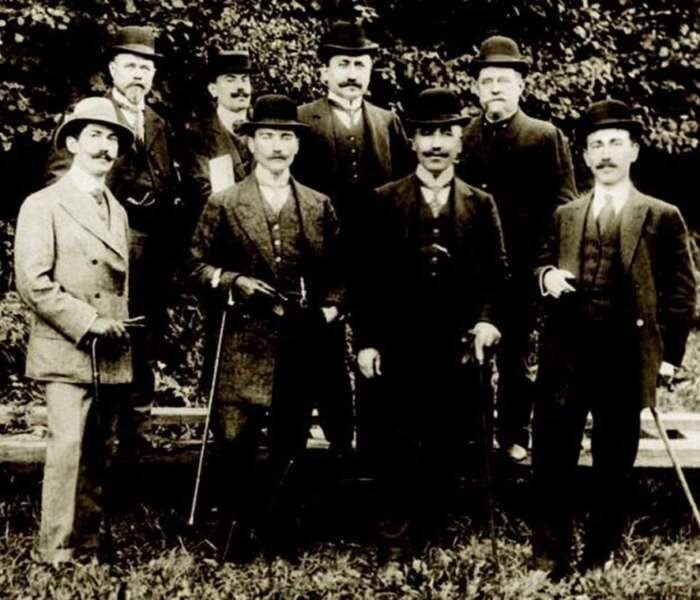
In 1911, he volunteered in the Tripoli War. He was promoted to major. He and a group of his friends were assigned to Tobruk and Derne region.
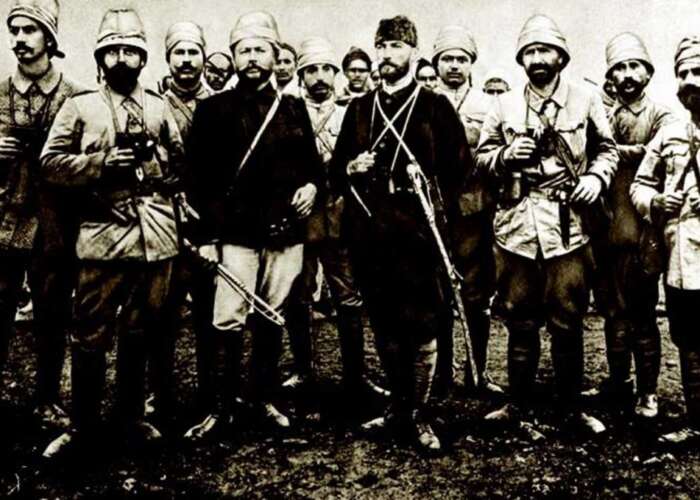
He caused heavy casualties to the Italians in a raiding attack with the local forces under his command in the Tobruk region. In 1912, he kept fighting successfully against the Italians in Derne. When the Balkan War started in October 1912, Mustafa Kemal joined the war with the troops in Gallipoli and Bolayır. On July 21, 1913, the Bolayır Corps, of which he was the chief of staff, took back Edirne from the Bulgarians. In the same year, he was appointed as military attaché to Sofia. He was promoted to lieutenant colonel in 1914, while serving in this position. His military attaché duty ended in January 1915.
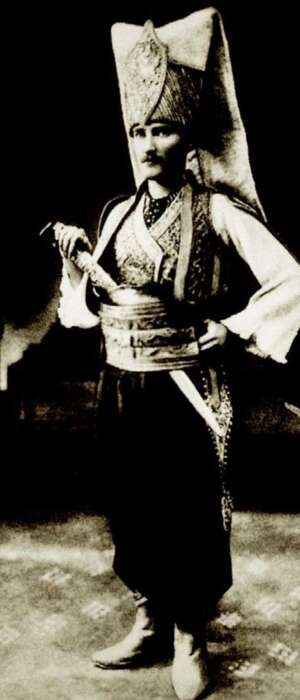
When the First World War started, Mustafa Kemal requested that he be given active duty. Accordingly, at the beginning of 1915, he was appointed to command the 19th Division to be established in Tekirdağ as a part of the 3rd Corps under the command of Esat Pasha (Bülkat). In World War I, which started in 1914, he led a heroic epic in Çanakkale and made the Allied Powers of the world realize that “Çanakkale is impassable!”.
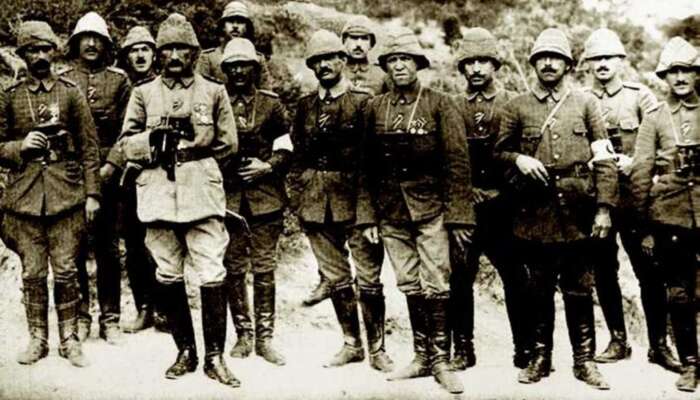
On March 18, 1915, when the British and French fleets attempting to cross the Dardanelles suffered heavy losses, they decided to land troops on the Gallipoli Peninsula. On April 25, 1915, the 19th Division commanded by Mustafa Kemal, stopped the enemy forces landing in Arıburnu at Conkbayırı. Following this success, Mustafa Kemal was promoted to colonel. The British attacked again in Arıburnu on August 6-7, 1915. The Commander of the Anafartalar Group, Mustafa Kemal, won the Anafartalar Victory on August 9-10. This victory was followed by Kireçtepe on August 17, and the second Anafartalar victory on August 21. Mustafa Kemal ordered his soldiers, “I do not order you to fight, I order you to die!” changed the fate of the front.
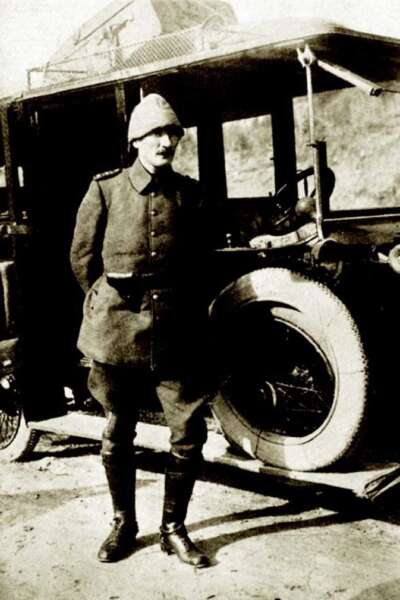
Mustafa Kemal was appointed as the Commander of the 16th Corps, which was transferred from Çanakkale to Edirne in 1916, after the Çanakkale Wars. This corps in Edirne was transferred to Diyarbakır with the same after a while when the Caucasus Front gained importance, and Mustafa Kemal was assigned to Diyarbakır. On April 1, 1916, he was promoted to major general.
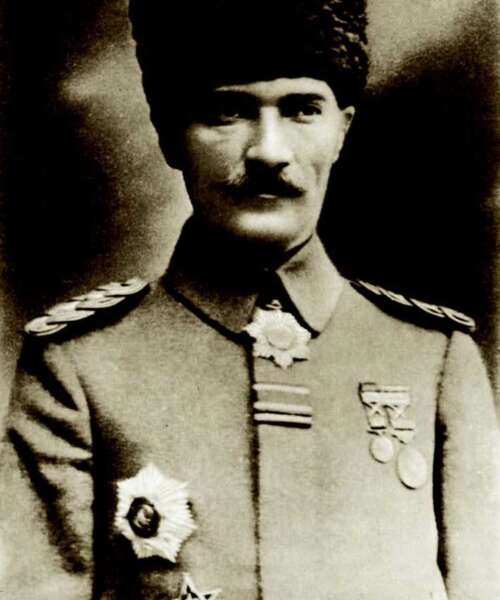
He fought against the Russian forces and ensured the recapture of Muş and Bitlis. He returned to Istanbul in 1917, after short-term assignments in Damascus and Aleppo. He traveled to Germany with Crown Prince Vahdettin Efendi and conducted inspections at the front. He fell ill after this trip. He traveled to Vienna and Karlsbad for treatment. He returned to Aleppo as the 7th Army Commander on August 15, 1918. He fought successful defensive battles against the British forces on this front. One day after the signing of the Armistice of Mudros, on October 31, 1918, he was appointed as the Commander of the Yıldırım (Thunderbolt) Army Group.
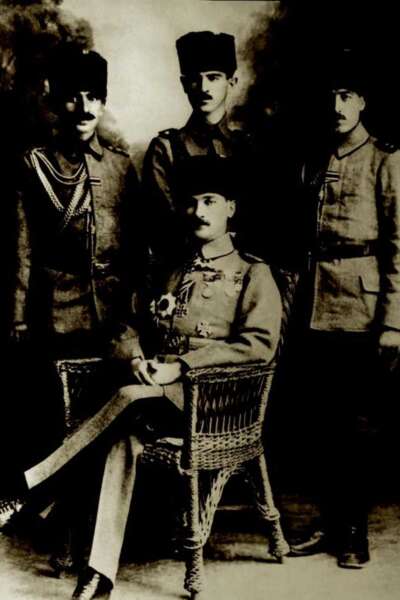
When this army was abolished, he came to Istanbul on November 13, 1918, and took office at the Ministry of War.
After the Armistice of Mudros, when the Allied Powers began to occupy the Ottoman forces, Mustafa Kemal sailed to Samsun on May 19, 1919, as the 9th Army Inspector. On June 22, 1919, with the circular he issued in Amasya, he declared that “The independence of the nation will be saved by the determination and resolution of the nation.” and called for the Sivas Congress to meet. Between July 23 and August 7, 1919, he gathered Erzurum Congress, and between September 4 and 11, 1919, Sivas Congress. Through these, he determined the path to be followed for the salvation of the homeland.
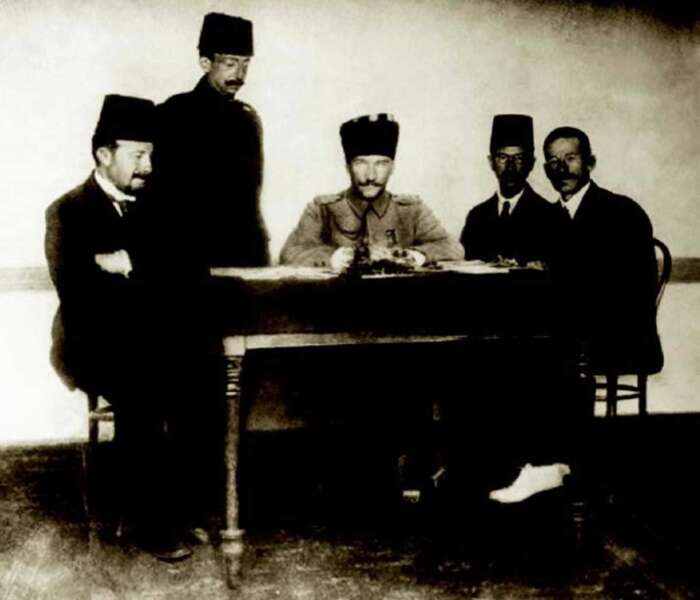
He was welcomed with much excitement in Ankara on December 27, 1919. On April 23, 1920, an important step toward the establishment of the Republic of Turkey was taken with the opening of the Grand National Assembly of Turkey. Mustafa Kemal was elected as the President of the Assembly and the Government. The Grand National Assembly of Turkey began to adopt and implement laws necessary for the successful outcome of the War of Independence.
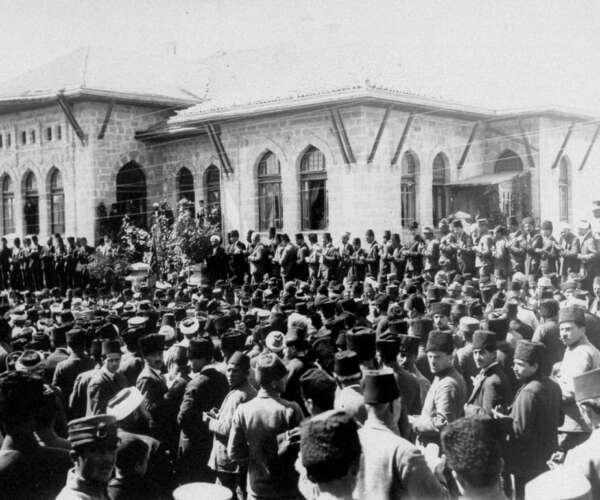
The Turkish War of Independence began on May 15, 1919, when the first bullet was fired against the enemy during the Greek invasion of Izmir. The victorious states of the First World War, which shared the Ottoman Empire among them by signing the Treaty of Sèvres on August 10, 1920, were first fought against by militia forces called Kuvayı Milliye. The Grand National Assembly of Turkey established the regular army and ensured the integration of the Kuvayı Milliye and the army; and ended the war with victory.
The most important stages of the Turkish War of Independence under Mustafa Kemal’s command are as follows:
The liberation of Sarıkamış (September 20, 1920), Kars (October 30, 1920) and Gyumri (November 7, 1920)
Çukurova, Antep, Maraş, Urfa defenses (1919-1921)
First Inonu Victory (January 6-10, 1921)
Second Inonu Victor (March 23-April 1, 1921)
Sakarya Victory (August 23-September 13, 1921)
The Great Offensive, the Field Battle of the Commander-in-Chief, and the Great Victory (August 26-September 9, 1922)
After the Victory of Sakarya, on September 19, 1921, the Turkish Grand National Assembly awarded Mustafa Kemal the rank of Field Marshal and the title of Gazi. The War of Independence ended with the Treaty of Lausanne signed on July 24, 1923. Thus, no obstacles remained for the establishment of a new Turkish state based on national unity on the territory of Turkey, which had been torn to pieces by the Treaty of Sèvres, leaving the Turks a homeland the size of just 5-6 provinces.
With the opening of the Grand National Assembly of Turkey in Ankara on April 23, 1920, the establishment of the Republic of Turkey was heralded. The Assembly’s successful management of the Turkish War of Independence accelerated the establishment of the new Turkish state. On November 1, 1922, the caliphate and the sultanate were separated and the sultanate was abolished. Thus, the administrative ties with the Ottoman Empire were severed. On October 30, 1923, the first government of the Republic was formed by İsmet İnönü. The Republic of Turkey began to grow on the foundations of “Sovereignty belongs to the nation unconditionally” and “Peace at home, peace in the world”.
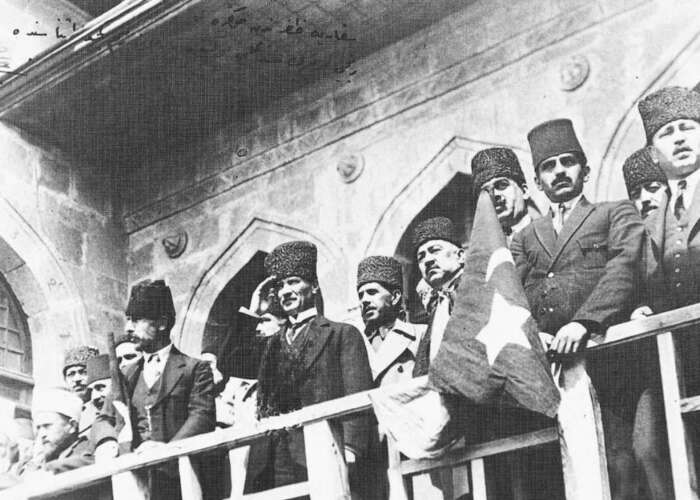
In accordance with the Surname Law, Mustafa Kemal was given the surname “Atatürk” by the Grand National Assembly of Turkey on November 24, 1934.
Mustafa Kemal was elected as the President of the Grand National Assembly of Turkey on April 24, 1920, and August 13, 1923. This presidency was at the level of the head of the state government. On October 29, 1923, the Republic was proclaimed, and Atatürk was elected the first president. According to the Constitution, presidential elections were renewed every four ears. In 1927, 1931, and 1935, the Turkish Grand National Assembly re-elected Atatürk as the President.
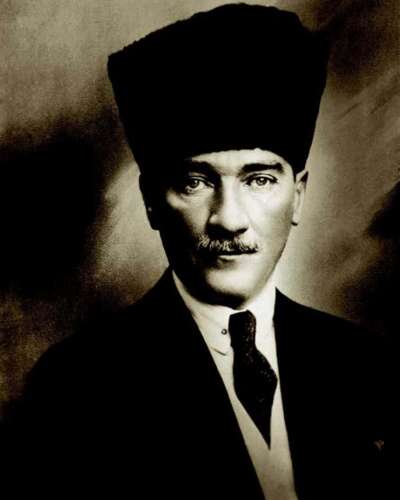
Atatürk frequently toured the country and inspected the work of the state on the spot. He gave orders to those in charge about the failing aspects. As the President, he hosted foreign heads of state, prime ministers, and commanders who visited Turkey. On October 15-20, 1927, he delivered his Great Speech (the Speech-Nutuk) on the War of Independence and the establishment of the Republic, and on October 29, 1933, he delivered his 10th Anniversary Speech.
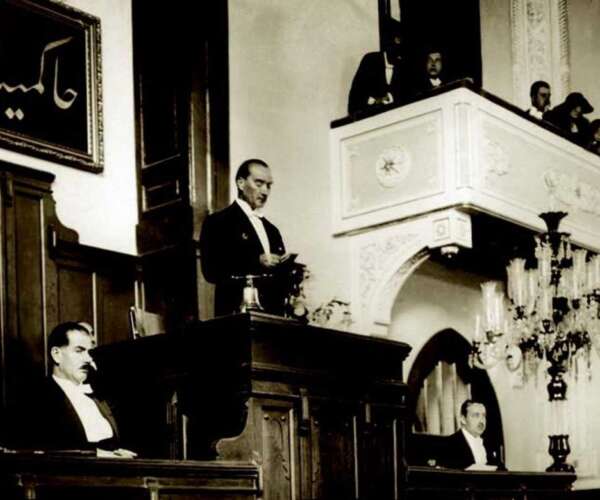
Atatürk maintained simplicity in his private life. On January 29, 1923, he married Latife Hanım. They traveled together on many trips around the country. This marriage lasted until August 5, 1925. Atatürk, who loved children very much, adopted Afet (İnan), Sabiha (Gökçen), Fikriye, Ülkü, Nebile, Rukiye, Zehra and a shepherd named Mustafa. He took the two children named Abdurrahim and İhsan under his care.
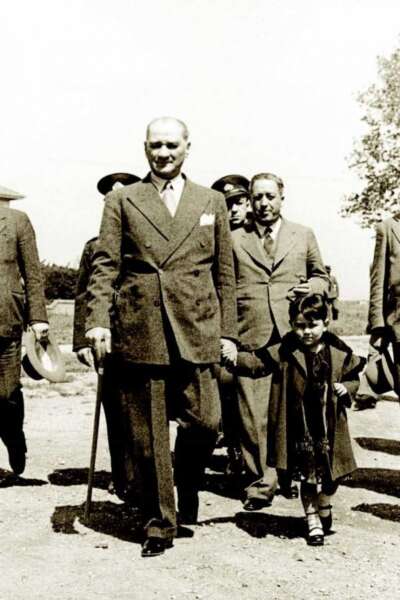
In 1937, he donated his farms to the treasury and some of his immovable properties to Ankara and Bursa Municipalities. He bequeathed a share of his inheritance to his sister, his adopted children and the Turkish Language and History Institutions. He loved reading, listening to music, dancing, horseback riding and swimming. He was interested in Zeybek dances, wrestling and Rumelia folk songs. He enjoyed paling backgammon and billiards. He cherished his horse named Sakarya and his dog, Fox. He had built an extensive library. He would invite statesmen, scientists and artists to hi dinners and discuss the problems in the country. He took care to dress clean and neatly. He was very fond of nature. He visited Atatürk Forest Farm frequently and participated in the work himself. He spoke French and German
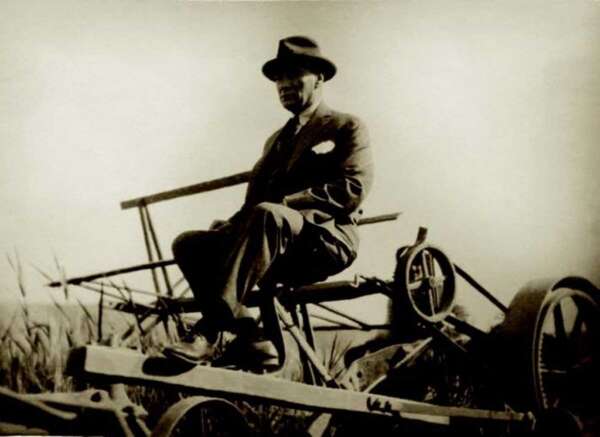
After a lifetime of fighting, Atatürk’s health began to deteriorate towards the end of 1937. Nevertheless, he worked intensely and with unending enthusiasm for Hatay to be included in the motherland. His liver failure became more pronounced in January 1938. The Great Leader spent his last das in Istanbul under constant doctor supervision. On Thursday, November 10, 1938, at five minutes past nine o’clock, he passed away in Dolmabahçe Palace. His death caused great sadness and deep resonances all over the world.
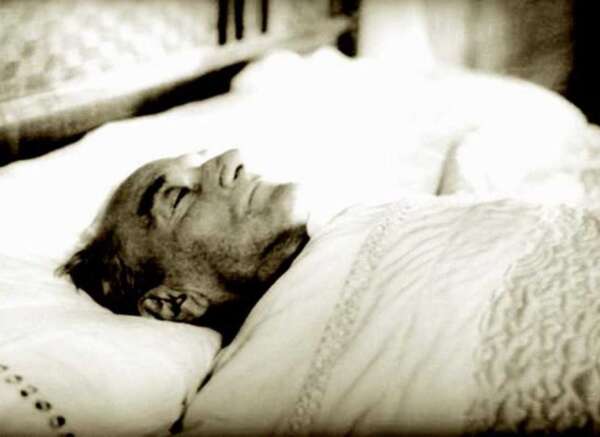
Atatürk’s body was placed in a special catafalque in the hall of Dolmabahçe Palace. The sacred coffin, wrapped in the Turkish flag and guarded by his comrades-in-arms, was left for the nation to visit for three days.
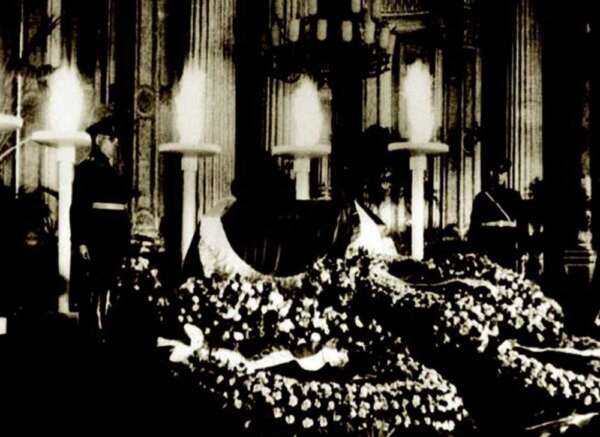
The body was transferred to Ankara on November 20.
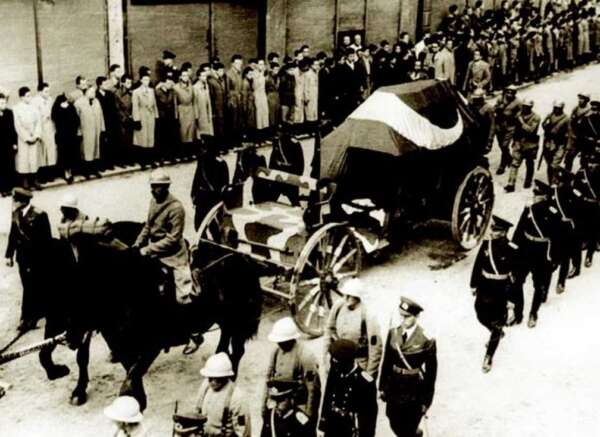
On November 21, he was placed in his temporary tomb in the Ethnography Museum with a great ceremony.
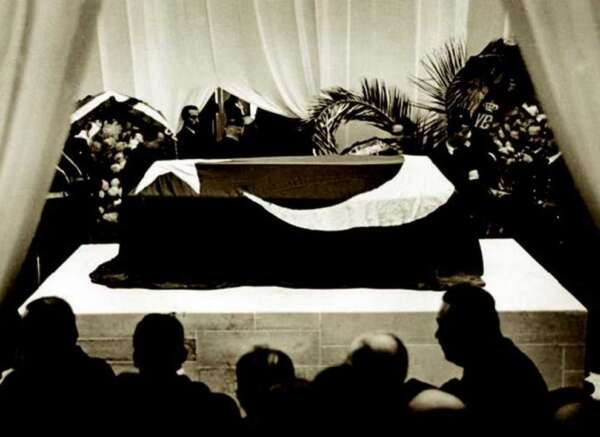
All states of the world sent special representatives to the funeral. Among the guests, foreign generals who had fought against him at Gallipoli and in other battles were especially noteworthy. On November 10, 1953, Atatürk’s body was taken from his temporary tomb in the Ethnography Museum and buried in his eternal resting place in Anıtkabir with a grand state ceremony.
